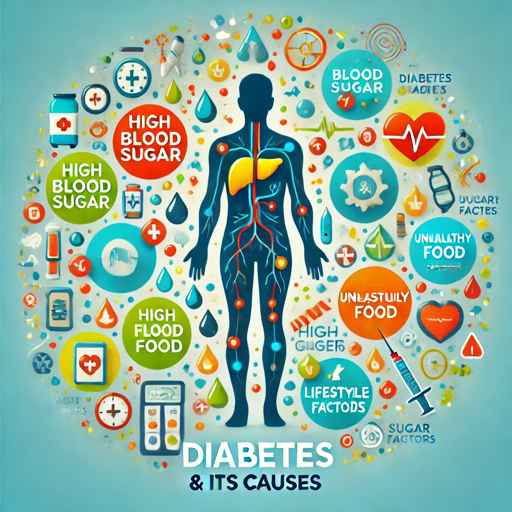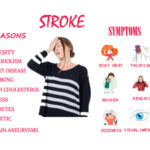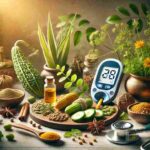What is Diabetes
Diabetes is a chronic disease that occurs either when the pancreas does not produce enough insulin or when the body cannot effectively use the insulin it produces. Insulin is a hormone that regulates blood glucose. Hyper glycaemia, also called raised blood glucose or raised blood sugar, is a common effect of uncontrolled diabetes and over time leads to serious damage to many of the body’s systems, especially the nerves and blood vessels.
Type of diabetes:
- Type 1 diabetes
- Type 2 diabetes
Type 1 diabetes ( Also called: juvenile diabetes)
This is a chronic (life-long) autoimmune disease. A chronic condition in which the pancreas produces little or no insulin. It typically appears in adolescence. It can also occur in children and adolescents depending on how many B-cells of the pancreas are non-functioning. The onset of symptoms corresponds to an 80% reduction in beta cell mass. Insulin is an important hormone that regulates the amount of glucose (sugar) in your blood.
Normally insulin functions in the following steps:
- Your body breaks down the food you eat into glucose (sugar), which is your body’s main source of energy.
Glucose enters your bloodstream, which signals your pancreas to release insulin. - Insulin helps glucose in your blood enter your muscle, fat and liver cells so they can use it for energy or store it for later use.
- When glucose enters your cells and the levels in your bloodstream decrease, it signals your pancreas to stop producing insulin.
- If you don’t have enough insulin, too much sugar builds up in your blood, causing hyperglycemia (high blood sugar), and your body can’t use the food you eat for energy. This can lead to serious health problems or even death if it’s not treated. People with Type 1 diabetes need synthetic insulin every day in order to live and be healthy.
Symptoms:
- Vaginal yeast infection
- Fatigue.
- Excessive hunger.
- Frequent urination, including frequent full diapers in infants and bedwetting in children.
- Excessive thirst
- Blurred vision.
- Unexplained weight loss.
- Loss of consciousness.
- Rapid breathing.
- Abdominal (stomach) pain.
Cause of diabetes 1
Type 1 diabetes happens when your pancreas stops producing insulin. Both your genes and immune system play important roles in causing this condition. If both you and your partner have type 1 diabetes, there’s about a 1 in 4 chance that your child could develop it too.
Complication :
- Foot problems, including ulcers and infections that can lead to gangrene.
- High BP.
- Kidney problems.
- Oral health problems.
- Eye problems, such as diabetes-related retinopathy diabetes-related macular edema, cataracts and glaucoma.
Skin conditions, such as dry skin, bacterial and fungal infections and diabetes-related dermopathy.
Type 2 diabetes:(Also called: adult onset diabetes)
In type 2 diabetes, there are primarily two problems. The pancreas does not produce enough insulin — a hormone that regulates the movement of sugar into the cells. And cells respond poorly to insulin and take in less sugar.
Type 2 diabetes used to be known as adult-onset diabetes. A chronic condition that affects the way the body processes blood sugar (glucose).With type 2 diabetes, the body either doesn’t produce enough insulin, or it resists insulin.
Symptoms
- Numbness or tingling in the hands or feet.
- Areas of darkened skin, usually in the armpits and neck.
- Fatigue.
- Slow healing.
- Dry skin.
- Frequent urination
Cause of diabetes 2
The main cause of Type 2 diabetes is insulin resistance. Insulin resistance happens when cells in your muscles, fat and liver don’t respond as they should to insulin. Insulin is a hormone your pancreas makes that’s essential for life and regulating blood sugar levels.
When your body doesn’t respond well to insulin, your pancreas must produce more insulin to manage rising blood glucose levels—a condition called hyperinsulinemia. However, if your cells become too resistant to insulin and your pancreas cannot produce enough to counteract this resistance, it ultimately results in Type 2 diabetes.
Insulin resistant factor:
- Physical inactivity.
- Eating highly processed, high-carbohydrate foods and saturated fats frequently.
- Certain medications and drug use.
- Hormonal disorders, like hypothyroidism and Cushing syndrome.
- Chronic stress and a lack of quality sleep.
- Excess body fat, especially in your belly and around your organs
Risk factors:
- Age.
- Weight.
- Less physical activities.
- Have a family history of Type 2 diabetes (biological parent or sibling).
- Pcos.
- High BP.
- Had gestational diabetes while pregnant.
What to eat :
- Fruits (citrus fruits) :Fruits Have more fiber. Citrus fruits, such as oranges, grapefruits, and tangerines.
- Whole Grains: Whole grains are rich in vitamins and minerals like B vitamins, magnesium, iron, and manganese. They are a great source of fiber too. Look for products that have the first ingredient with the word “whole” in it. Some examples of whole grains include whole oats, quinoa, barley, farro, and whole wheat.
- Leafy greens: Leafy greens are low in calories and have so much nutritious . It is low in digestible carbs, carbs that body absorbs so they will not affect blood sugar level.
- Chia seeds & flex seeds :They’re extremely high in fiber, yet low in digestible carbs. It reduces blood pressure and inflammatory markers.
- Flaxseeds may also help lower blood pressure.
- Beans :Beans are a type of legume rich in B vitamins, beneficial minerals (calcium, potassium, and magnesium), and fiber.
- Nuts :reduce inflammation and help prevent weight gain.
- Broccoli: Broccoli is a highly nutritious vegetable.
- Strawberries :This is important because low insulin sensitivity can cause blood sugar levels to become too high.
- Garlic :One clove Garlic is highly nutritious and can help improve cholesterol and blood pressure in people with diabetes.
Foods to avoid:
1. Fried foods
It have lots of trans fat type of fat which have higher risk of heart disease. Fried foods like potato chips, french fries, and mozzarella sticks are also typically high in calories, which could contribute Trusted Source to weight gain if over consume.
2. Refined grains
Refined grains like white bread, pasta, and rice are high in carbs but low in fiber, which can increase blood sugar levels more quickly than their whole grain counterparts.
3. Sugar-sweetened beverages
Beverage like sweet tea , soft drinks soda energy drink ice tea have contain a concentrated amount of sugar in each serving, which can cause blood sugar levels to spike.
4. Alcohol :
if patient drinks too much alcohol advised to limit their alcohol intake. Alcohol can increase the risk of low blood sugar, especially if consumed on an empty stomach.
Candy: Candy contains a high amount of sugar in each serving.
5. Fruit juice : eat whole fruits .
Fruit juice contains all the carbs and sugar found in fresh fruit, but it lacks the fiber needed to help stabilize blood sugar levels.


